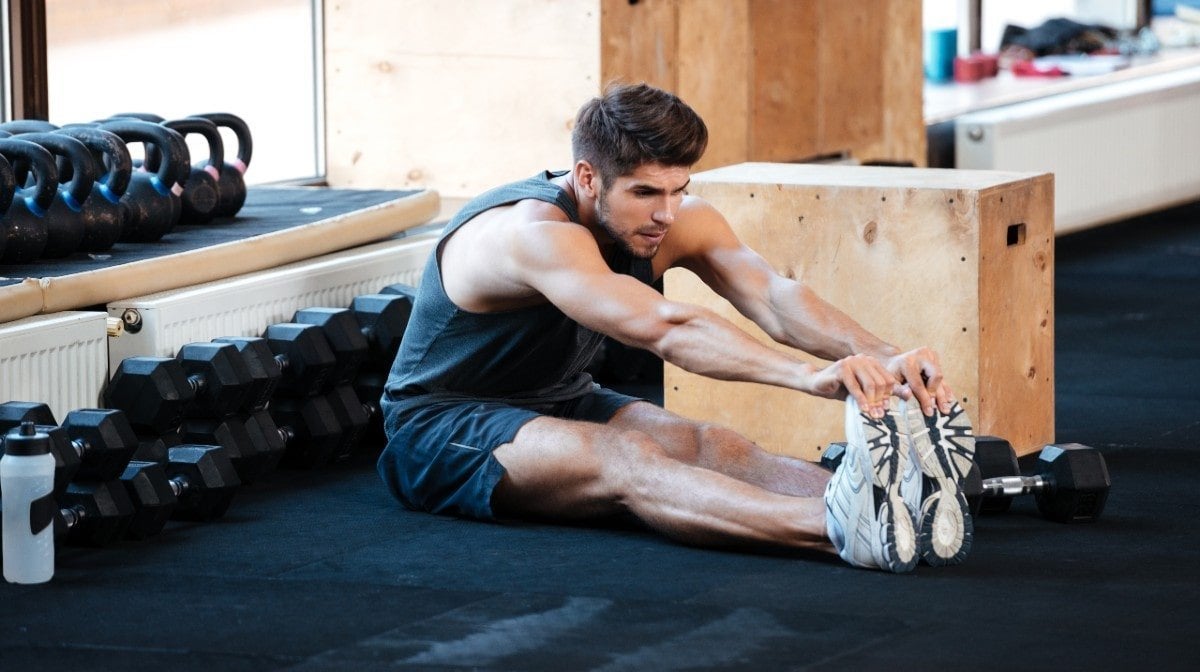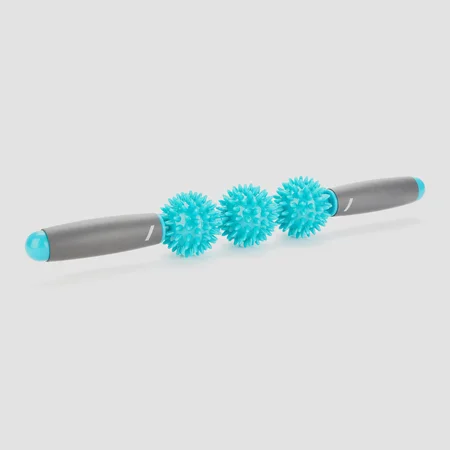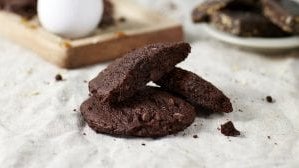What is DOMS (Delayed Onset Muscle Soreness)?

What is DOMS?
DOMS stands for Delayed Onset Muscle Soreness. It is usually felt 12-72 hours following exercise, and often lasts for around 96 hours, though this can be longer. DOMS is a sensation of soreness, tenderness, and stiffness that can make you feel like you’ve had a productive session - but significant post-exercise soreness can interfere with our following training future sessions if it isn’t managed effectively.

- Familiarity with the exercise: New exercises are more likely to induce DOMS.
- Intensity of the exercise: If a session is more intense (i.e. higher training volume or load), then it will induce greater amounts of muscle damage.
Eccentric loading: This is when the muscle is contracting while lengthening (e.g. the biceps during the lowering phase of a bicep curl). This type of contraction results in greater amounts of microtears within the muscle fibres. Current research has identified a number of mechanisms responsible for inducing DOMS, although there is not currently a definitive mechanism agreed upon. Mechanical damage of the muscle tissue, inflammation and swelling, and increase in free radical production have all been suggested to contribute to the symptoms associated with DOMS.
Is DOMS Good or Bad?
Feeling DOMS doesn’t necessarily mean you’ve had a good workout, it's simply a sign exercise-induced muscle damage has occurred. The more experienced you are with exercise, the less muscle soreness you will likely experience over time, as your body becomes more familiar with training stimuli. DOMS is associated with greater hypertrophic adaptations. A feeling of post-exercise soreness may be expected in sessions where high volume and intensity are involved. While it’s not essential you feel this way after every session, positive training adaptations are likely to follow.
What causes DOMS?
DOMS, or Delayed Onset Muscle Soreness, occurs as a result of exercise-induced muscle damage. It’s believed the sensation of soreness is felt as a result of inflammation that occurs in order to heal damaged muscle tissue. In this section, we’ll look into the primary factors that lead to this.
Localised muscle damage
The response to localised muscle damage is one that can be compared to a muscular injury or the inflammatory response to an infection. A large volume of tissue breakdown occurs during exercise when working at higher intensities (i.e. the higher the percentage of 1RM load you lift will equal a greater amount of muscle damage). Eccentric loading or overloading the eccentric portion of the exercise by using a greater weight on the eccentric/downward phase can form high amounts of mechanical tension and tissue breakdown.
Tension
When muscles are passively stretched (without actively being tensed), this is known as passive elastic tension. On the other hand, if you place tension on a muscle by isometrically (statically) flexing it as hard as possible, this is called active tension. During both types of stretch, high amounts of mechanical tension are formed. Taking a muscle through its full range of motion and lengthening, or “stretching” it, while also using resistance has been shown to produce a large amount of mechanical damage. For example, stretching the pectoral muscles fully during dumbbell flyes to perform a “loaded stretch” has been shown to trigger large amounts of post-exercise soreness. High amounts of mechanical tension are produced during these types of actions, as high eccentric force is produced by the muscle in a lengthened state.
Inflammation
Certain forms of exercise (eccentric exercise in particular) can result in injury to muscle cell membrane, setting off an inflammatory response leading to prostaglandin and leukotriene production. Leukotrienes are responsible for controlling the inflammation process and prostaglandins (specifically PGE2) directly cause the pain sensation associated with DOMS by making certain pain receptors more sensitive to the effects of various chemical messengers.
Free Radicals
Leukotrienes also increase vascular permeability and attract neutrophils to the area of damage. This means molecules can pass through capillaries more easily, and a build-up of white blood cells occurs. These neutrophils generate free radicals which can also increase damage to the cell membrane.
Swelling
Swelling results from the movement of cells and fluid from the bloodstream into the spaces between the muscle tissues, and can contribute to the sensation of pain. This occurs during the inflammatory healing response, when blood flow to damaged muscle fibres is increased in order to remove cellular waste products and deliver vital nutrients.

DOMS FAQs
Does DOMS affect performance?
Performance shouldn’t be affected by feelings of soreness, although it may result in reduced effort due to feelings of discomfort (i.e. it feels uncomfortable to contract a muscle with any level of intensity when experiencing DOMS). DOMS tends to affect performance mentally, as it can often be uncomfortable, and the body wants to “protect” itself when pain is felt.
Can I train when I’m sore?
A proper warm-up can help to alleviate the feeling of DOMS, but if you feel the sensation is too intense, then you can simply train another body part instead!
Is feeling DOMS the sign of a good workout?
Not necessarily - it’s essentially a sign you have damaged muscle fibres. Your workout may have involved a lot of eccentric lifting, or you might be fairly new to the exercise, in which case positive training adaptations are likely to follow.
How long does DOMS usually last?
Usually for around 96 hours, but it’s not uncommon for it to last longer. In some cases, it can last up to a week.
What exercises typically produce the most soreness?
There is no specific exercise that induces DOMS, but rather the technique in which the exercise is performed. Exercises that emphasise loading, novel exercises, high volume or high intensity will result in the greatest amount of muscle damage, and are more likely to lead to DOMS.
What does it mean if I never feel sore after a workout?
This could be from a number of reasons, but as previously mentioned, it isn’t a sign you haven’t worked hard enough in your workout. Experienced gym-goers typically experience fewer DOMS symptoms, whereas people trying out a new type of exercise can expect to feel sore muscles for a few days after.
Want to learn more? Why not check out some of our related articles?





